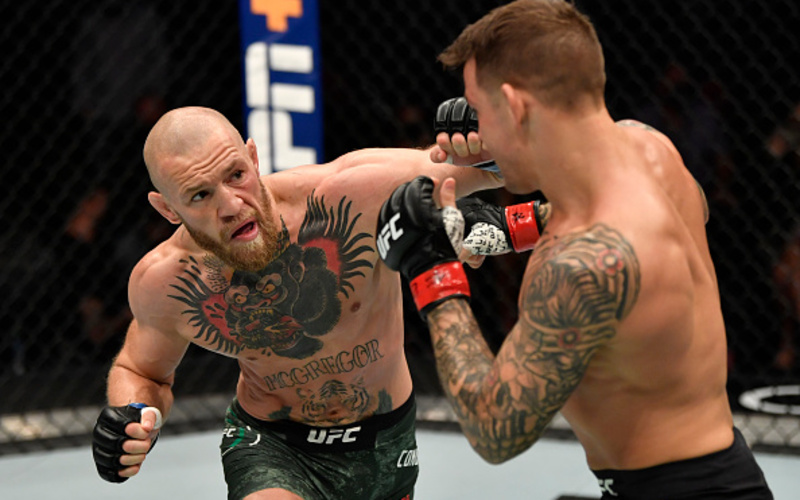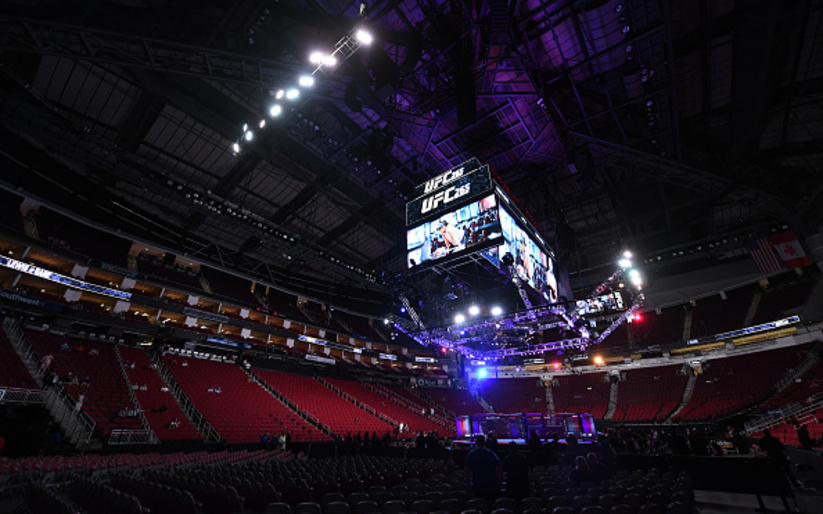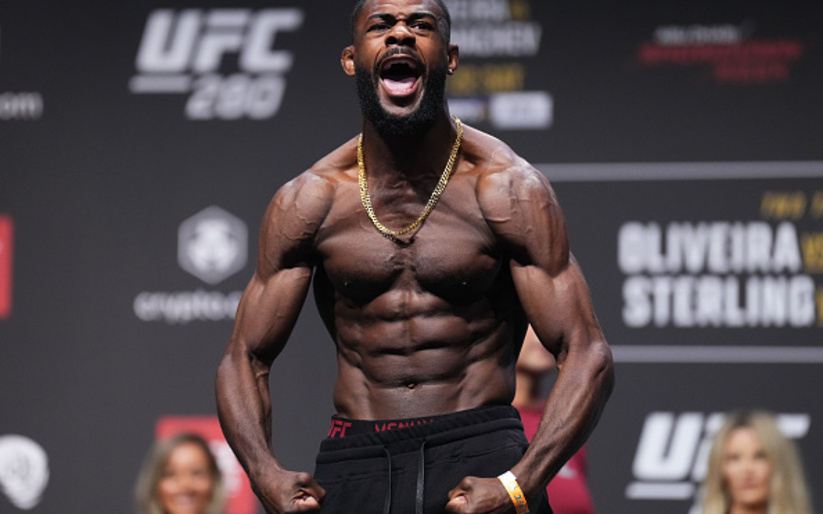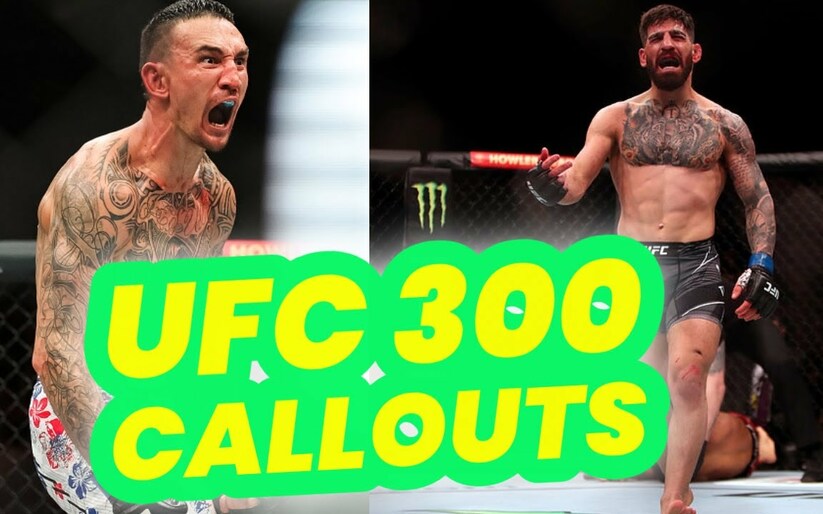Saturday night, Dustin Poirier took on the biggest star the sport of MMA has ever seen, Conor McGregor, and knocked him out. Certainly, there’s no way to take away from this achievement. McGregor was heavily favored by both fans and analysts and was widely seen as a bad matchup for Poirier. Poirier’s gameplan was stellar in both conception and execution. He used clinch wrestling to tire McGregor out, calf kicks to destroy his mobility, kept himself safe with excellent pocket defense and finished the job with his trademark killer instinct.
But Conor McGregor played into Poirier’s hands with his own changes, and this article will be looking at how arguably the best striker in the history of the sport was defeated in a fight almost entirely on the feet.
Conor McGregor: Feet of Clay
There seems to be an odd obsession recently with determining who is the best boxer in the UFC. The organization has seen Olympic wrestlers, ADCC champions, black belts of every stripe – but no top-class boxers, at least in the male divisions. It’s no secret why – no male champion boxer worth his salt is going to take the huge pay cut that a move to the UFC would foist upon them. The question of who the best pure boxer in the UFC is is honestly not that important in the grand scheme of things, and might be someone like Petr Yan anyway.
The reason this matters is not that boxing is irrelevant for MMA – nothing could be further from the truth. Conor McGregor, Dustin Poirier, and Max Holloway have all made their money from integrating boxing into their striking games in a big way and so have countless other MMA fighters. It’s that when boxing stops being part of your striking game and just becomes your whole striking game itself, you start to develop very severe weaknesses.
McGregor’s own myth has clouded this more than anything. It’s extremely unclear how much he boxed as a youth, though it was probably at least a little bit. McGregor has also tried extremely hard to sell himself as a boxer, largely to justify the lucrative boxing match against Floyd Mayweather and possibly a second against Manny Pacquiao. He’s been so successful at this that it’s become very easy to forget that for the most successful part of his career his style was actually more related to point karate.
Conor McGregor: The Stances
There are several different major types of stances that someone can fight with. The more square-on types of stance, like those found in Muay Thai or full-contact karate, allow the fighter to check kicks easier and make the thigh a less vulnerable target. The traditional boxing stance puts one shoulder forward, maximizing the reach of the jab while helping to hide the chin.
The most common MMA stances tend to be a mix between those two, trying to balance checking kicks with keeping a wider stance to defend takedowns. Finally, the traditional point karate stance, also used in Taekwondo, allows a fighter to use very quick in-and-out movement, by staying light on their feet and bouncing, keeping their hands lower to help with balance.
The latter proved perfect for Conor McGregor on his come up. Not only did it help him make full use of his impressive quickness, but the traditional stance also lent itself to the flashy kicks McGregor was able to use to herd his opponents into the path of his left hand. Roundhouse kicks are better used from a square stance, but sidekicks, turning kicks and spinning kicks are all favored by a side-on karate stance.
Conor McGregor: The Boxing of The Notorious One
Conor McGregor still displayed superb conventional boxing skills, especially for an MMA fighter, but it had nothing to do with his stance. Rather, it revealed itself in his excellent accuracy, punching form, and combinations. More than that, McGregor was someone who’s own boxing talents were most apparent when he was exposing weaknesses in poor boxing form elsewhere.
Fighters who were too quick to lead sloppily, had a poor response to pressure – or, as in the case with his first encounter with Poirier, had simplistic defense – these were all easy prey. McGregor’s rise to the top came from his ability to force responses with his pressure and then he would capitalize on them with counters. Even one of the greatest strikers in MMA history, Jose Aldo, made an uncharacteristic error with some early aggression that McGregor immediately made him pay for with a knockout.
The incredibly low margin of error that McGregor’s opponents have in terms of striking – the fruits of a combination of accuracy, power, and superb counterpunching – allowed him to compensate for a lot of his point karate stance’s weaknesses, as well as his own. The point karate stance is vulnerable to leg kicks because the thigh is presented at an angle inwards, making checking difficult. The most famous user of that stance in modern MMA, Stephen Thompson, has traditionally struggled most when his opponents kick the legs early and often. Leg kicks are more effective in closed stance matchups – orthodox against orthodox, or southpaw against southpaw, but even in open stance matchups, this tendency holds true.
McGregor’s other weaknesses are more to do with his own attributes. Though sometimes his cardio issues are exaggerated, his gas tank is mediocre at best for an elite fighter. This is made worse by McGregor using hair-trigger counters; going into a period of complete focus for whole rounds at a time to be totally ready when opportunities present themselves. This allows him to exploit his hand speed and reactions for counter opportunities but is extremely taxing on any fighter’s mental and physical stamina.
But McGregor’s own power and pressure make investing in attritive tactics difficult. Kicking the legs opens the kicker up to the risk of punches, especially if they make the critical error of throwing a kick while in punching range. Going to the body also creates this risk, since it requires the hands to be lowered and a fighter to get deeply close to their opponent.
Wrestling, even with little profit, such as wrestling against the cage, can often drain a fighter with mediocre cardio, but a point karate stance is generally hard to wrestle against. Not only does it allow a fighter to fight at a longer range where wrestling is more difficult, but the lower hands are right there to help defend against takedowns.
So McGregor’s point karate stance allowed him to avoid wrestling exchanges that would tire him out, while his power and counterstriking ability allowed him to discourage the leg kicks that would exploit his stance. It was a perfect fit for both his strengths and weaknesses.
Conor McGregor: Evolving Stance
Conor McGregor would begin to shift away from his karate stance to a more conventional boxing first approach in the aftermath of the first Nate Diaz fight. Diaz is someone who, by virtue of his iron chin, is more or less able to upturn the calculus that made the point karate stance so useful to McGregor. Nearly impossible to knock out – unless you’re Josh Thomson – Diaz was able to take a pounding from McGregor and stay standing. McGregor made things worse for himself by throwing hard on the lead instead of trying to get counter opportunities from Diaz and was much criticized in the aftermath of the fight for overusing his flashy kicks.
The result was that McGregor burnt through all of his cardio in a round delivering a pasting that would likely have knocked out or seriously hurt anyone in the division bar Diaz, and got submitted.
For the rematch then, the karate stance was largely abandoned. The bouncing movements required to make the in-and-out movement work are taxing, and as a result a fighter tires quicker and as they do so it becomes less effective. Instead, McGregor would fight Diaz with a higher guard and a boxing stance. In a moment of irony, Diaz also uses the boxing stance and has traditionally been vulnerable to low kicks as a result, and McGregor would take advantage of the closed stance matchup – southpaw versus southpaw – to hammer in leg kicks.
The leg kicks along with a more patient counterstriking approach and the switch to a boxing stance paid dividends in the rematch with Diaz, giving McGregor just enough extra breathing room to get a decision win over the iron chinned Californian.
That wasn’t to say that we’d seen the last of McGregor’s point karate stance. Against Eddie Alvarez, McGregor would employ a sort of hybrid, and against Khabib Nurmagomedov seemed to go back completely to his classical stance.
But after McGregor’s 2019 break, in both his fights against Donald “Cowboy” Cerrone and Poirier, he came out with a much higher guard and a much more planted boxing stance like in the Diaz fight. Why?
Almost certainly because McGregor has one eye on that prospective boxing match with Manny Pacquiao. Certainly, McGregor is still an extremely dangerous opponent even using this style. But it makes his weaknesses more exploitable.
Conor McGregor: Fighting the Diamond
The end result is that when Conor McGregor fought Dustin Poirier he was up against an opponent able and willing to exploit those very weaknesses. Many southpaws struggle more against fellow southpaws, but McGregor had dispatched Poirier in their first fight fairly quickly so that he seemed to have passed the test with flying colors. However, since closed stance matchups make leg kicking easier, Poirier was better suited to hacking away at it.
All of this would have been useless had it not been Poirier, with his excellent defense, carrying out the plan. Leg kicks have long been touted as McGregor’s weak point, especially after Max Holloway had his own boxing defused by Alexander Volkanovski with leg kicks. It was attacking the legs while still remaining safe from McGregor’s power that was the difficult part, and Poirier handled it with aplomb.
He did an excellent job avoiding McGregor’s lefts and mitigating the ones that did land. while kicking safely. McGregor tried picking up the leg after some of the kicks but the combination of Poirier’s defense and McGregor not being much of an offensive ground threat meant that this failed to deter Poirier from his strategy.
In addition, while a point karate stance is more vulnerable to leg kicks than a Thai or kickboxing stance, being light on your feet reduces the damage compared to a boxing stance with the feet planted, and also can allow the user to mitigate the damage by quickly retreating. By adopting a feet-planted boxing stance, McGregor ended up playing more into Poirier’s gameplan than even Poirier could have imagined. It didn’t stop there, either.
Chad Mendes is possibly the best wrestler in the history of the featherweight division. It took him half a round to secure a takedown on McGregor. 36 seconds were all Dustin Poirier needed to succeed on a takedown in his first round. Though a BJJ black belt, Poirier is hardly known for his offensive wrestling. The key was two-fold; McGregor was almost certainly not expecting a takedown from Poirier, but he also had his hands high for a boxing guard, instead of low to help stuff the takedown.
McGregor quickly made a huge effort to get back to his feet, but Poirier then wrestled him against the cage. When McGregor reversed positions against the cage, Poirier stubbornly clung to an arm to force McGregor to keep working in the clinch. McGregor got off some decent clinch work, but clinching up against the fence is not where knockouts happen, and by making McGregor work there Poirier was staying safe from his power while tiring McGregor out and forcing him to waste his best round for little gain.
So then, when Poirier finally hurt McGregor and finished him with a torrent of punches, it was the culmination of a gameplan that had long been possible but required the right man for the job to make it work. It also revealed how McGregor has let his desire for another boxing crossover superfight undermine his skillset in his own sport. We don’t know if McGregor will ever fight again. But if he does, he’d be best served by remembering what made him such a superstar in the first place.
Feature Image:



